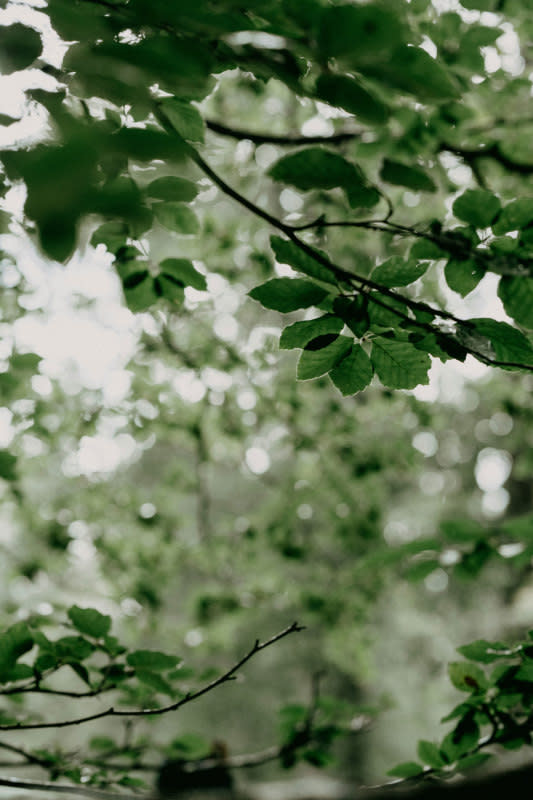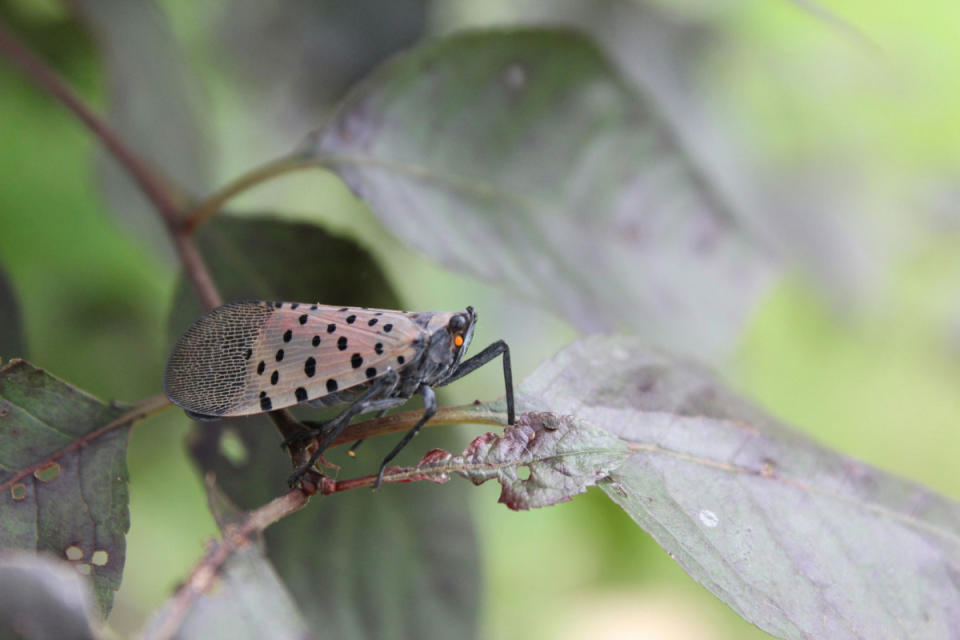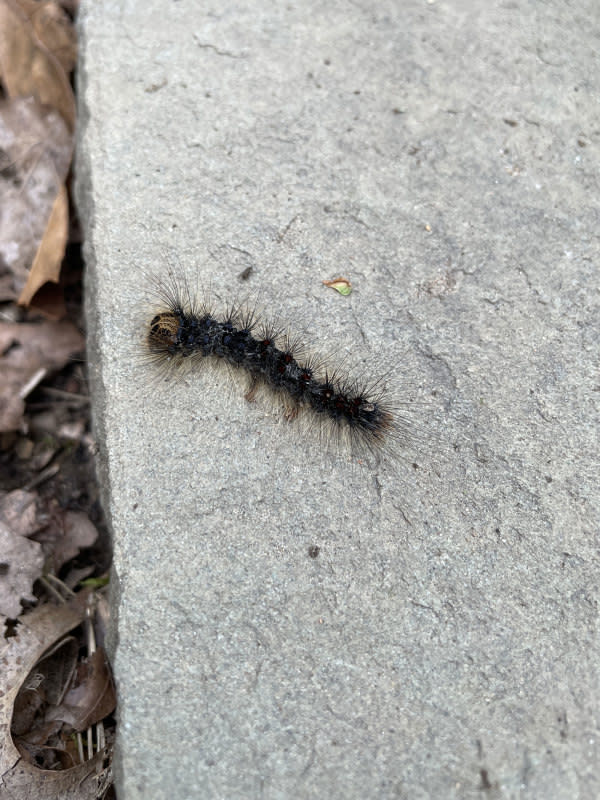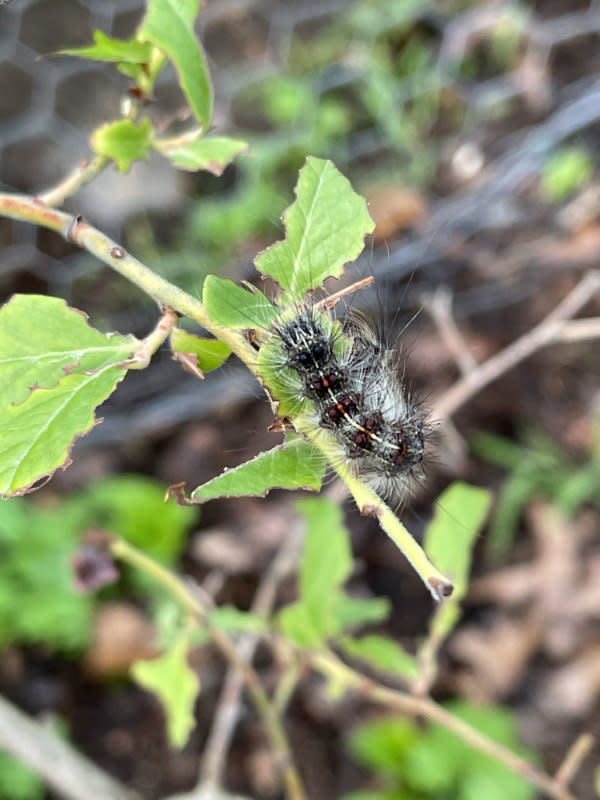How to Protect Trees from Invasive Species of Insects
Safeguarding your trees against pests is important to their health and longevity. Invasive species can wreak havoc by defoliating or infecting trees, and left untreated, can lead to loss of limbs and their eventual demise. Early detection and intervention is important. Homeowners should learn to identify these pests, but an arborist is best suited to offer guidance, gauge tree health, and recommend effective control measures. Stay vigilant and you can help protect your trees, and wooded areas throughout your community. (The scene in the video above is not from a horror movie; that's from our real-life battle with a spongy moth caterpillar infestation in 2021.)

Photo by Annie Spratt on Unsplash
How to Protect Trees from Emerald Ash Borers
Emerald Ash Borers are a significant threat in North America, having killed millions of ash trees
Appearance: Metallic green beetles, about half an inch in length. Narrow, elongated body shape
Lifecycle: Adults emerge in late spring or early summer and lay eggs on ash tree bark. Larvae tunnel beneath the bark to feed.
Signs of damage to trees: Infected trees may have thinning foliage, canopy dieback, D-shaped exit holes in the bark, serpentine galleries under the bark
"Emerald Ash Borers' preferred host is the ash tree. They are commonly found in the Midwest but after being found in Oregon last year, they have now spanned from coast to coast," shares Blake Watkins, Operations Partner at Monster Tree Service and ISA Board Certified Master Arborist. "Arborists have been battling EAB for a long time now and luckily our tools have improved along the way. When EAB was first discovered, ash trees were preemptively removed to slow the spread. Now, healthy trees or only minimally damaged can be saved with systemic insecticides."
Preventative measures matter when it comes to protecting your Ash trees. An arborist can help you determine if your tree is a good candidate for saving and take steps to protect an infestation. Hire a licensed applicator to be sure the insecticide is properly injected. Done correctly, it can discourage the predatory insects from setting up residence in your trees for 2-3 years.

Photo by Magi Kern on Unsplash
How to Protect Trees from Spotted Lanternflies
Spotted Lanterflies are a significant threat in the Northeastern United States, and are rapidly spreading deeper into the country every year.
Appearance: Approximately one inch in length. These harmful insects have wings with distinct spots and patches. Adults have grayish wings with black spots and red underwings
Life cycle: Egg masses laid on various surfaces, including trees, vehicles, and outdoor furniture. Nymphs emerge in spring and undergo several developmental stages before becoming adults. Adults are active in late summer and fall.
Signs of damage to trees: Feeding damage causes oozing sap and weeping wounds on trees. Honeydew secretions attract other insects and promote mold growth. Can lead to tree stress, decline, and death.
Allergic reactions: Contact with the insect's bodily fluids or secretions may cause skin irritation or allergic reactions in some individuals.
"Spotted lanternfly has now spread through most of the Northeastern US. Primarily in Pennsylvania, NJ, DE, and MD but they can also be found in VA, IN, and as far west as Chicago," warns Watkins. "The spotted lanternfly eats a wide variety of native and invasive trees and plants including one of their favorite hosts, the Tree of Heaven. These insects damage the trees and plants that they eat, leaving them vulnerable to other damaging pests and fungal diseases. [An arborist can help] develop an integrated pest management plan that may include the below multi-step process to manage their population:
Tree Removal: At Monster Tree Service, we recommend removing 90% of the Trees of Heaven growing on your yard as a preventative measure if a spotted lanternfly population has been spotted in the area around where you live. The remaining 10% can be used as “tree traps” to lure in the spotted lanternfly for mechanical and chemical control.
Infestation Treatment: Another method of treatment and prevention includes using insecticide to protect other high-value host trees. An arborist can also treat any “trap trees” with a bark-applied systematic treatment to help reduce actively feeding insects in both current and future seasons.
Egg Removal: If you’re able to detect a population on your property early enough, an arborist can also treat the tree to kill egg masses and prevent them from hatching in the first place."

Emily Fazio

Emily Fazio
How to Protect Trees from Spongy Moths
Spongy Moths (formerly known as Gypsy Moths) are keen to destroy the foliage on many (but not all) plants. This is not the species of caterpillar you want to protect (We're also on Team: Protect the Pollinators — Save the Monarch Butterfly Caterpillars ✌️).
Considered a significant forest pest in North America
Appearance: Female moths are white or cream-colored with dark, wavy markings on their wings. Females do not fly, but climb trees to lay their eggs. Male moths are smaller and darker, with brown or black wings. They fly with the objective of finding white moths on trees for mating.
Lifecycle: Eggs are laid in clusters on tree bark, vehicles, outdoor furniture, and other surfaces. Caterpillars hatch from eggs in spring and begin feeding on foliage as the main food source. They are initially very small but quickly grow to full-size caterpillars. Caterpillars undergo several molts before pupating and transforming into adult moths in the late summer.
Signs of damage to trees: Feed voraciously on a wide range of shrubs and tree species (over 300). They have a preference for oak, maple, birch, and poplar, and are known to favor both native species and invasive plants. Severe defoliation can hinder plant growth, weaken or kill host trees, and result in branch dieback, particularly during and after outbreaks. They did not eat our garden plants, but they defoliated all trees (including evergreens) in our neighborhood.
Allergic reactions: Caterpillars have tiny, barbed hairs that can cause skin irritation, rash, or allergic reactions in sensitive individuals upon contact.
"Spongy Moths have been a tree pest for a long time. Another invasive pest, these insects can at times be ignored, and in other instances, horticultural oil can be enough to protect the tree, but in some cases, populations can explode which necessitates systemic insecticide applications," notes Watkins. "Experienced arborists can identify Spongy Moths in different stages of their lifecycle throughout the year and recommend an appropriate treatment to match the severity of the infestation." Help your trees by following these tips:
Tree Banding: Tree banding is a multi-phase process. Aim to do every tree in your yard that is a threat to your home and property, as well as your largest, oldest trees. First, tie a strip of burlap (or similar material) four to five feet up the tree trunk before (or shortly after) spongy moth eggs have hatched. Caterpillars that climb down the tree will nest in the burlap. As a secondary step — arguably most effective in our case — wrap the trunk of the tree in duct tape, sticky side out. Apply generous amounts of 100% pure petroleum jelly (Vaseline or store-brand) on top of the tape. This helps deter and trap the caterpillars to prevent them from climbing into the tree's canopy for a source of food. As a word of warning, this is a months-long battle. The trees will rain pellets of poop all day and night. After any weather event (wind, rain), caterpillars will fall from the trees. Reapply the petroleum jelly to the tape surface as a fresh barrier after bad weather to trap them on ground level.
Removing Eggs: If you find eggs on your property as they are laid by white moths in the summer, you can attempt to remove them from the tree before they hatch by scraping them off the surface or using horticultural or mineral oil to remove and destroy them. Be aware, they will lay egg sacs all up and down the tree, so it isn't likely that you will be able to get all of them.
Treatments: To kill off an infestation using professional treatments, call a certified arborist trained in spongy months who can apply an appropriate treatment to keep your yard protected from invasive pests. Treatments include injections and foliage sprays.
Stop the Spread of Invasive Insects
"Many invasive plant pests can spread to new areas in infected firewood," cautions Watkins. "To prevent spreading an infestation, don’t move untreated firewood long distances. Buy it where you will burn it or purchase certified heat-treated wood that is pest-free."
Related: Winter is the Best Time For a Tree Evaluation—Assess For Damage and Disease Today

